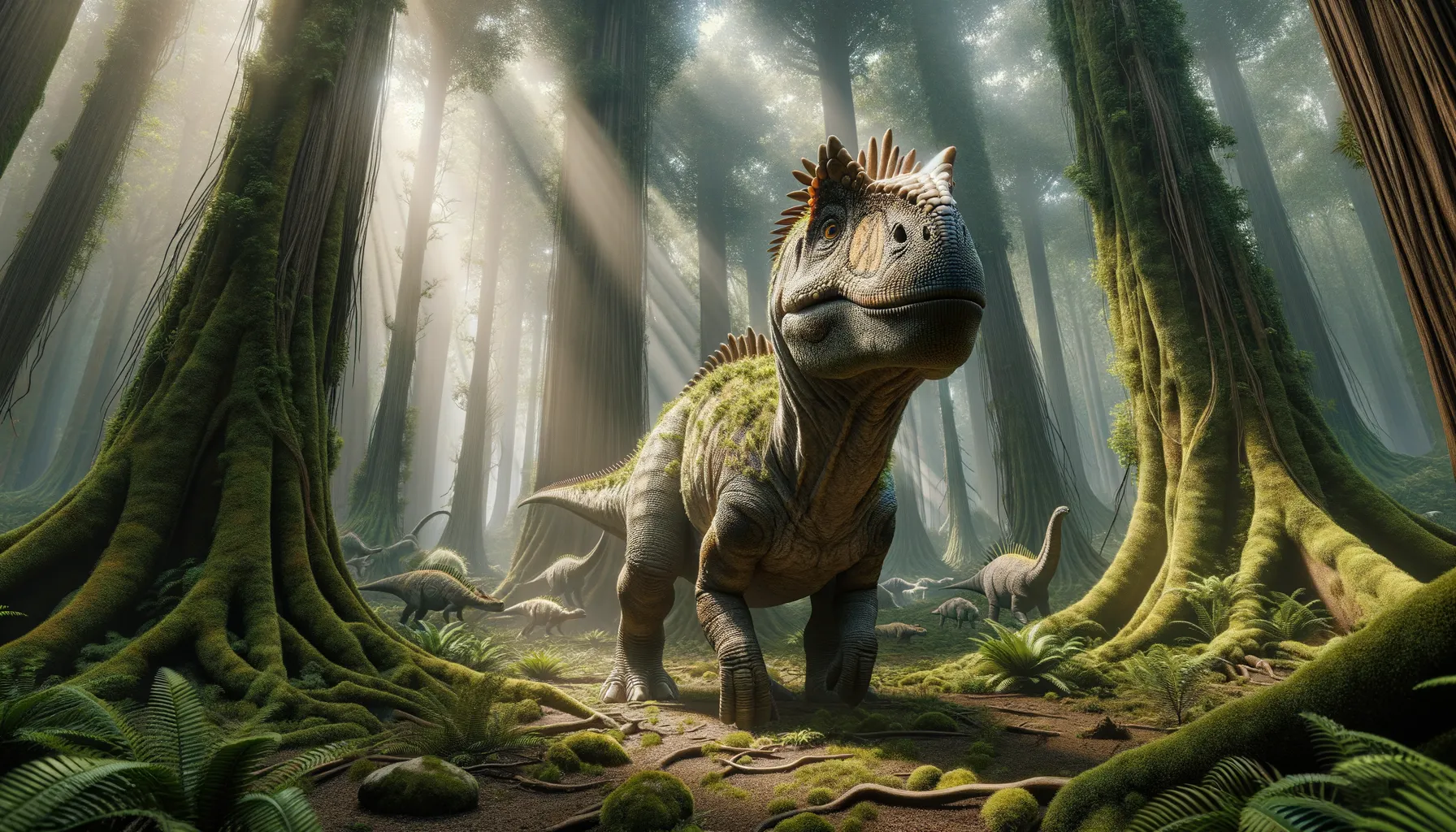
Microcephale
Small head, big mystery of the ancient world.
Period
Cretaceous
Length
Approximately 2 meters long.
Height
Roughly 0.5 meters tall.
Weight
Approximately 10 kilograms.
Microcephale was a small, plant-eating dinosaur that lived during the Cretaceous period. Known for its small, thick-skulled head, it is believed to be a pachycephalosaur. The limited fossil evidence gives us a glimpse into its lifestyle, suggesting it roamed the ancient forests in search of food. With its modest size and unique adaptations, Microcephale offers insight into the diverse dinosaur populations of its time.
Diet
Microcephale was likely herbivorous, feeding on soft vegetation such as ferns and cycads. It might have foraged close to the ground where these plants were abundant.
Hunting
As a plant-eater, hunting behavior was not part of its lifestyle. Instead, it might have used its thick skull for defensive purposes against predators.
Environmental challenges
Microcephale faced challenges from larger predators that roamed its Cretaceous environment. It had to adapt to changing climatic conditions that affected plant growth. Its small size may have made it vulnerable to predation and environmental shifts.
Speed
Likely slow, relying on stealth rather than speed.
Lifespan
Unknown; potentially similar to other small dinosaurs.
First discovery
Identified in 2005 from limited skull fragments.
Fun Facts
- Microcephale means 'small head,' reflecting its tiny skull compared to its body.
- This dinosaur was part of a group known as pachycephalosaurs, famous for their thick skulls.
- Microcephale lived during the Late Cretaceous period, around 85-65 million years ago.
- The species is thought to have been a plant-eater, roaming the land in search of low-lying vegetation.
- Despite its name, Microcephale's skull was robust and possibly used for head-butting competitions.
- Its fossils have provided intriguing insights into the diversity of small dinosaurs during the Cretaceous period.
- The discovery of Microcephale has helped scientists understand more about dinosaur evolution in northern continents.
Growth and Development
Microcephale likely grew quickly to reach maturity, as many small dinosaurs did. It might have experienced changes in skull morphology as it aged, which is a feature seen in its family group. Developmental stages may have included gradual strengthening of its thick skull dome.
Habitat
Microcephale inhabited areas rich in vegetation, such as forests with plenty of undergrowth. It needed environments that provided ample food, water, and cover from larger predators. Its habitat might have varied regionally depending on climatic conditions.
Interaction with other species
Microcephale may have coexisted with a variety of herbivorous and carnivorous dinosaurs. It possibly formed groups for protection, although evidence is limited. Its interactions likely included competition for food resources with other herbivores.
Natural lifespan
Natural lifespan remains unknown due to limited fossil data.
Reproduction
Microcephale likely reproduced by laying eggs, as with most dinosaurs. Breeding behaviors remain speculative but might have involved display rituals using its skull. Clutch sizes and parental care patterns are unknown but could be similar to other small herbivorous dinosaurs.
Social behaviour
It might have lived in small groups or herds, providing mutual protection. Such social structures could have played roles in mating, foraging, and raising young. Vocal or visual signals might have been used for communication within its group.
Fossil locations
Microcephale fossils have been discovered primarily in North America. The initial discovery consisted of skull fragments, which are the primary type of remains found. Due to its small size, complete skeletons are rare and challenging to recover.
